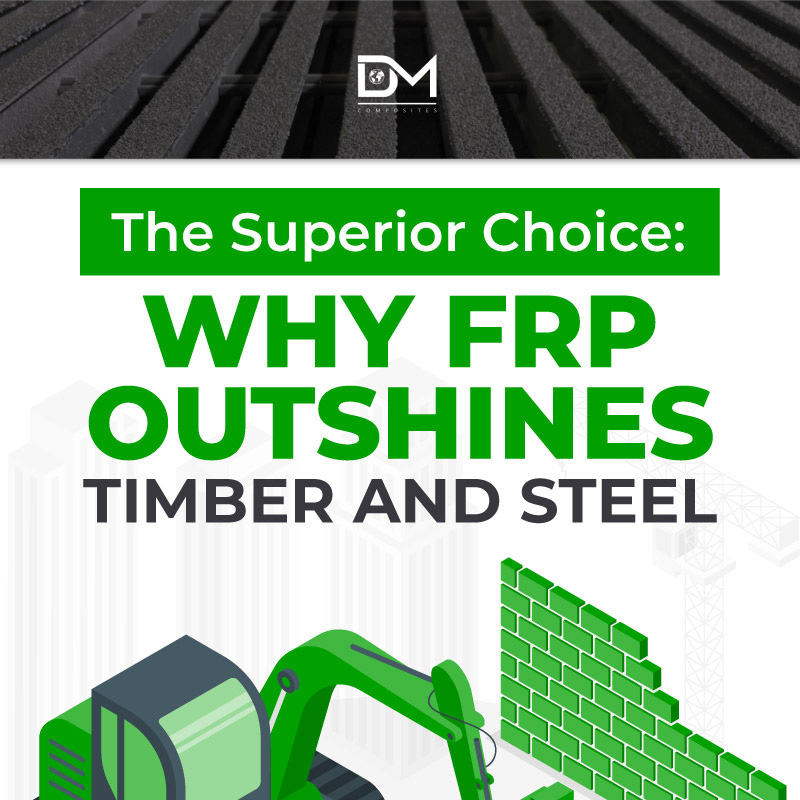Introduction: Why FRP Grating is Revolutionizing Industrial Applications in Australia
In Australia’s demanding industrial sectors—from wastewater treatment plants to mining and marine environments—the need for durable, noncorrosive, and slip-resistant materials is critical. Traditional materials like steel or wood often succumb to corrosion, wear, and safety concerns. This is where FRP grating (Fibre Reinforced Polymer) steps in, offering a revolutionary solution with unmatched durability, corrosion resistance, and safety features.
As industries across Australia seek cost-effective, long-lasting materials, FRP grating is fast becoming the go-to choice for non-slip industrial applications. In this guide, we’ll explore everything you need to know about FRP grating, its industrial benefits, and how it outperforms traditional materials in Australia’s harsh environments.
What is FRP Grating?
FRP grating, or Fibre-Reinforced Polymer grating, is a composite material made from fibreglass reinforcements combined with a high-quality resin matrix. The result is a lightweight, durable, and corrosion-resistant grating solution perfect for heavy-duty industrial use. FRP grating is known for its non-slip properties, making it ideal for applications where safety is paramount, such as marine platforms, wastewater treatment facilities, chemical plants, and mining sites.
The unique properties of FRP grating have made it a popular choice across Australia’s industrial landscape, particularly in environments where exposure to chemicals, moisture, or saltwater would quickly degrade traditional materials.
Key Benefits of FRP Grating for Industrial Applications in Australia
1. Corrosion Resistance: Ideal for Harsh Environments
One of the most significant advantages of FRP grating is its superior resistance to corrosion. Traditional metal grating, especially in industrial settings exposed to chemicals, saltwater, and moisture, corrodes over time, leading to costly replacements and safety hazards. However, FRP grating is inherently resistant to rust, chemical exposure, and extreme weather conditions, making it the perfect solution for marine environments, wastewater treatment plants, and chemical processing facilities across Australia.
2. Non-Slip Safety Features
Safety is a top priority in any industrial application, and FRP grating excels in providing a non-slip surface, even in wet or oily conditions. The slip-resistant surface of FRP grating significantly reduces the risk of workplace accidents, which is why it is frequently used in industries like mining, oil and gas, and marine infrastructure. In Australia, where industries often operate in challenging environments, having non-slip grating that meets Australian safety standards is critical.
3. Lightweight and Easy Installation
Compared to steel or concrete, FRP grating is much lighter—up to 75% lighter than steel—making it easier to handle, transport, and install. This lightweight nature reduces installation time and costs while also minimizing the need for heavy equipment or specialised labour. For industries in remote locations in Australia, such as mining operations or offshore facilities, this is a significant benefit, as it reduces both logistics and labour costs.
4. Low Maintenance and Long Lifespan
One of the key benefits of FRP grating is its low maintenance requirements. Traditional materials like steel require constant upkeep—such as repainting and rust prevention treatments—to ensure they remain safe and functional. FRP grating, on the other hand, requires little to no maintenance thanks to its corrosion-resistant and UV-stable properties. Its long lifespan, often exceeding 25 years, ensures a cost-effective solution for industries seeking long-term infrastructure.
5. Fire Retardant Properties
In industrial environments, fire safety is a crucial consideration. FRP grating is available in fire-retardant grades, ensuring it meets Australian fire safety standards for industrial applications. This feature is particularly important for industries like oil and gas, mining, and chemical processing, where the risk of fire hazards is high.
Industrial Applications of FRP Grating in Australia
1. Mining Industry
In Australia’s mining industry, durability and safety are key. FRP grating is used extensively in mining platforms, walkways, and maintenance areas due to its ability to withstand heavy loads, harsh conditions, and exposure to corrosive materials. Its non-slip surface reduces the risk of worker injuries, while its lightweight nature makes it ideal for installations in remote mining locations.
2. Wastewater Treatment Plants
The highly corrosive environment of wastewater treatment plants can quickly degrade traditional materials like steel or timber. FRP grating provides an ideal solution due to its corrosion-resistant properties, ensuring a longer lifespan in these demanding environments. Its non-slip surface also ensures that workers can safely navigate wet and slippery areas, reducing the risk of accidents.
3. Marine and Coastal Environments
Australia’s extensive coastline and marine industries require materials that can withstand constant exposure to saltwater, UV rays, and tidal flooding. FRP grating is perfect for marine platforms, jetties, walkways, and offshore facilities. Its corrosion resistance ensures that it remains functional and safe in marine environments, while its lightweight design makes it easy to install in remote locations.
4. Chemical Processing Plants
In chemical processing facilities, exposure to harsh chemicals can quickly deteriorate traditional grating materials. FRP grating is highly resistant to a wide range of chemicals, making it the perfect choice for applications where chemical spills or vapours are a concern. Its non-conductive properties also make it a safer option in areas where electrical hazards may exist.
Why Choose FRP Grating Over Traditional Materials?
When it comes to selecting grating materials for industrial applications, FRP grating stands out due to its:
- Superior corrosion resistance to chemicals and saltwater.
- Non-slip safety features, even in wet or oily environments.
- Lightweight design for easy handling and installation.
- Durability and low maintenance, offering a cost-effective solution.
- Fire-retardant properties for high-risk environments.
In Australia, where industrial sectors like mining, marine, and wastewater treatment face harsh environmental challenges, FRP grating provides the perfect balance of durability, safety, and cost-efficiency.
How to Choose the Right FRP Grating for Your Industrial Application
When selecting FRP grating for your project, consider factors such as load capacity, environmental exposure, and safety requirements. DM Composites offers a wide range of FRP grating solutions tailored to meet the specific needs of various industrial applications in Australia. Our experts can help you choose the right FRP grating for your project, ensuring maximum safety, durability, and cost-efficiency.
Conclusion: The Future of Industrial Infrastructure with FRP Grating in Australia
As Australia continues to invest in infrastructure and industrial development, the demand for high-performance, corrosion-resistant, and safe materials like FRP grating will continue to rise. Whether it’s in the mining industry, marine environments, or chemical plants, FRP grating offers a durable, low-maintenance, and cost-effective solution for industrial applications across Australia.
If you’re looking for a non-slip, corrosion-resistant, and long-lasting grating solution for your industrial project, FRP grating is the answer. Contact DM Composites today to learn more about how our FRP grating products can benefit your next project.
Read More:


